Fire lighting is a profound ‘secret’ which if you do not master, you might come to a time when you do not survive at all because of your ignorance. Take the time and patience to learn to be its master.
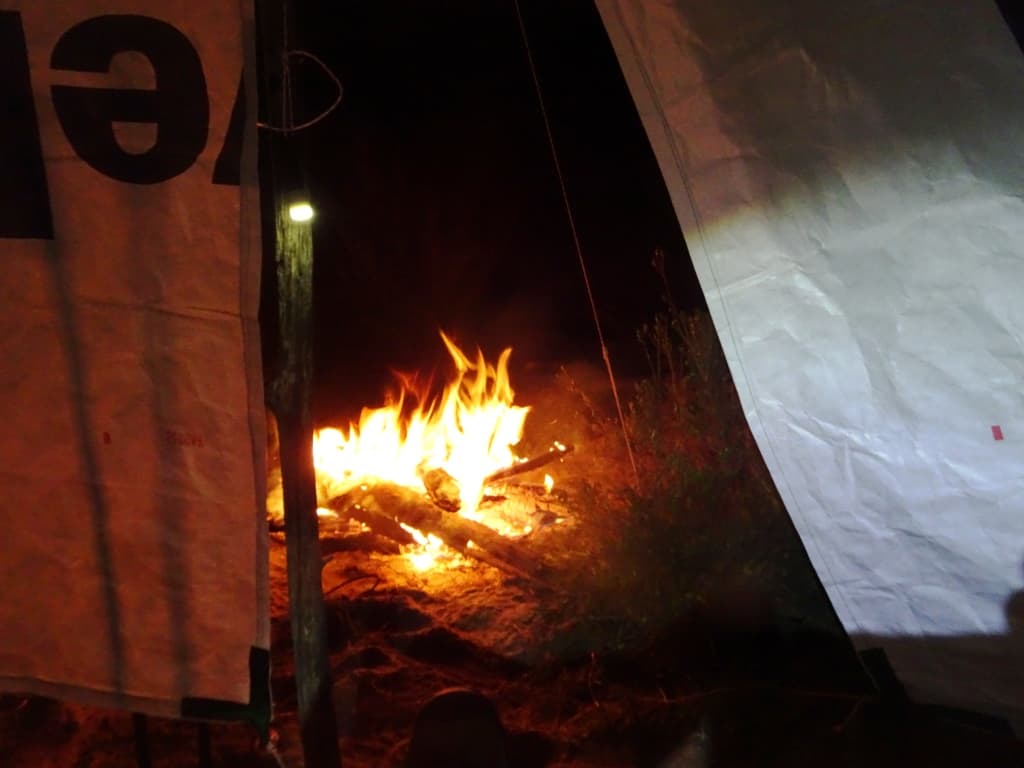
Prometheus the Titan has a lot to answer for – but Boy, have we ever been sitting around the campfire for a long while: https://www.livescience.com/when-did-humans-discover-fire.html
His name (interestingly) means ‘forethought’. So much is to be learned from etymology! Did you know he was mankind’s progenitor, having fashioned the first of us from clay some time back?
You will (probably) remember that he ‘earned’ a terrible punishment for his over-reach (with the gift of fire to humanity – in defiance of Zeus). Being an immortal it was an eternal one: to be chained to a rock where each day an eagle, the emblem of Zeus, was sent to eat Prometheus’ liver (thought to be the seat of human emotions) – Ouch! – which would then grow back overnight to be eaten again the next day. Prometheus was eventually freed by the hero Heracles. Well done! At this time of year we have a problem with eagles eating our lambs, wretched things.
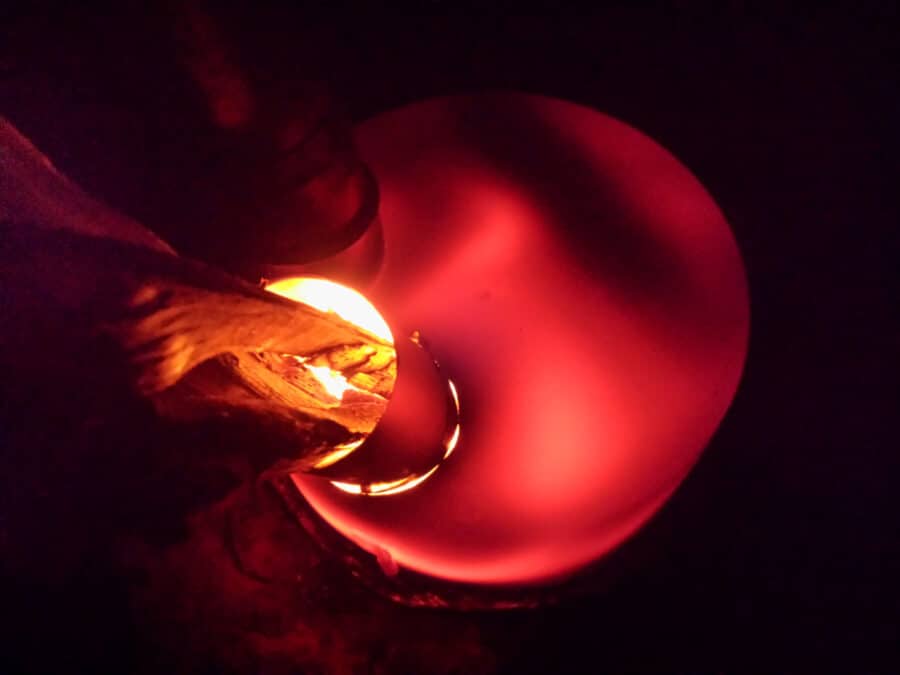
‘Forethought’ is a good portmanteau to indicate fire-making skill.
I was prompted to write this post by a comment a girl made about my 20 gram ultralight hobo stove recently. Although she could see that it would be a much better idea than her gas arrangement (most anything would be) she opined that being able to always light a fire ‘was not in her skill set’ (her words). I was astonished that anyone would have such a vocabulary but be unable to do such a simple thing as light a fire (in the wet) something which my children have all been able to do since they were very small indeed!
I told her that s/he ought not be going hiking (and that I would certainly never take anyone) until s/he had mastered that skill – as to do otherwise was putting her life in danger or valuing it at very little – surprising how many folks do! I doubt she took the point (as the old saw goes, ‘A word to the wise is enough’), but just in case she is reading this, it will give her something to follow as she practices…
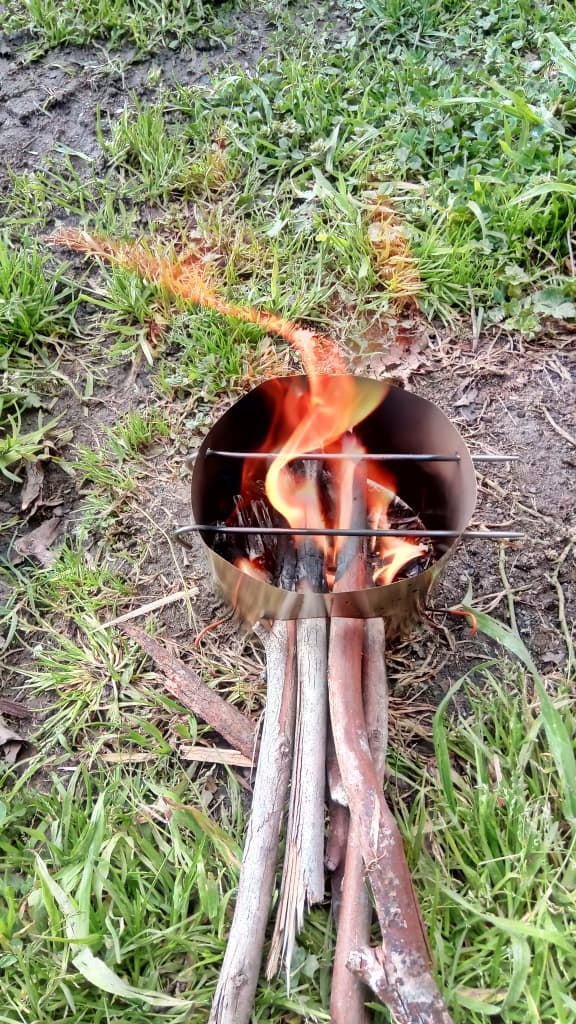
I am not an expert on fire but I guess I have lighted a fire most days (and sometimes more than once) for nearly seventy years now, so by now I could at least be described as a ‘gifted amateur’.
Some people have made pyrotechnics a serious study. Few excel ‘Tim the Tinker’ in this regard. There is much to be learned about being a pyromaniac from his wonderful website, but I digress…
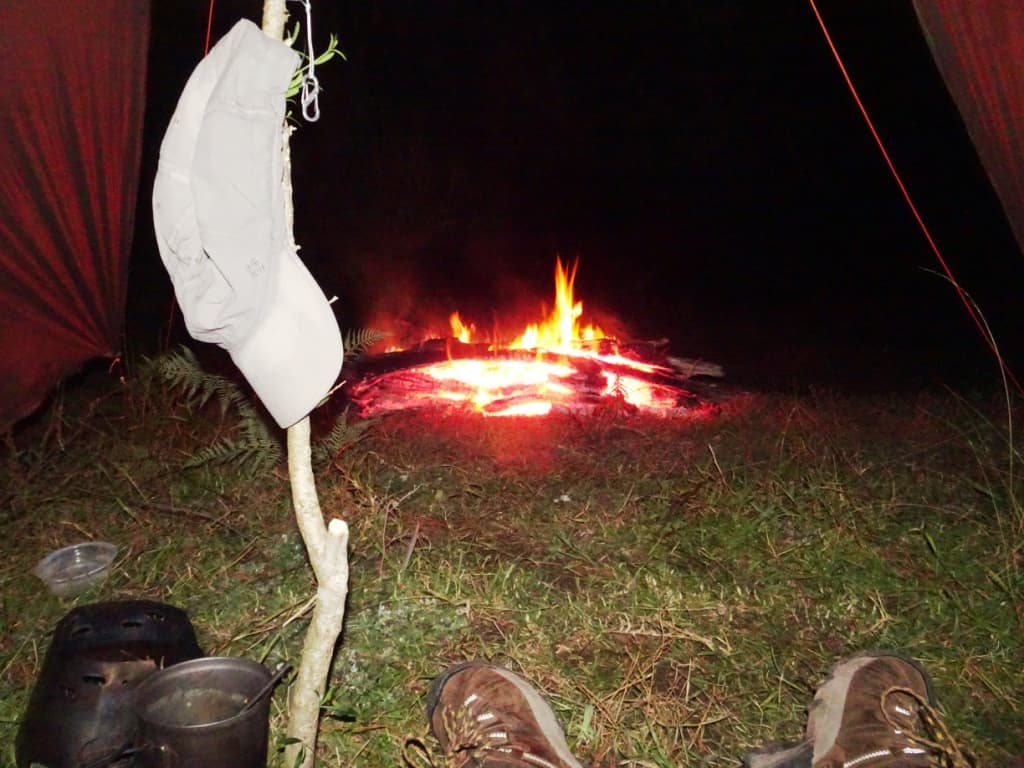
Key ‘ingredients’ of fire making (to me) are tinder, kindling, starting wood and burning wood – which is how I described them to my kids growing up as it became part of their chores to participate in these daily ‘rituals’. Della and I are (back) inside this morning (after ‘visiting’ the lambs on a very wet cold hillside) by the heat of a lovely wood heater which has trickled along all winter (and many winters past) keeping us safe and warm.
I had a post about Tinder recently which perhaps you should read but it and what I have always called ‘starting wood’ are the most important things to master. First you want something at hand which is either/or dry enough or combustible enough to strike fire pretty much at a spark – anyway as soon as the smallest flame merely touches it. You can carry (eg in a snap-lock bag) a small quantity of this from camp to camp as it will only weigh a hundred grams at most (for starting several day’s fires). You can dry the material out at last night’s fire for the next night’s as you go along, if you see what I mean? I have done this even in Fiordland where it rains at least an inch every single day (on average) so there is not much dry timber anywhere to be found.
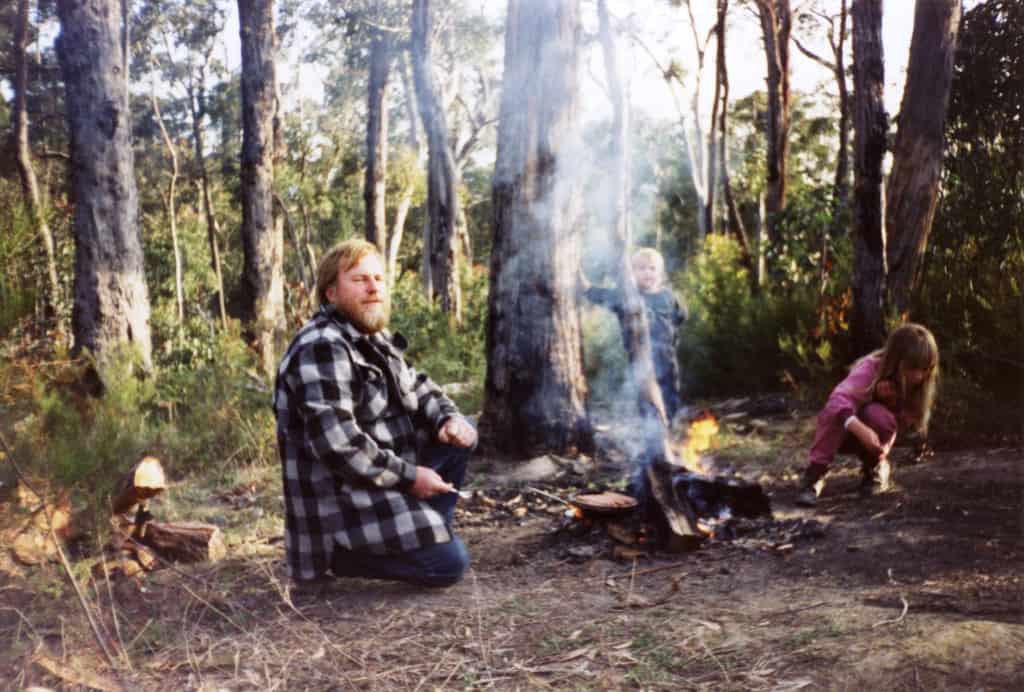
I remember many years ago hiking along the Moroka River with my late friend Steve Cleaver his wife, Kerri and my wife, Della. This was one of their first overnight hiking trips (for Steve, alas one of his few) and I was anxious they would enjoy it. The forecast argued it would be very cold along the Moroka that day/night even though it was quite warm (say 20c+ when we left home). It looked like it might not get much above 0C along the Moroka – and such it proved to be. It really is much colder at altitude (over 1,000 metres more in this case) and should be prepared for. It also rained much of the day – but Steve was keen to continue anyway, so we did.
Because it was cold, wet and raining I remember everyone was amused at my stopping by every fallen log, hollow tree & etc to collect small quantities of ‘dry’ material in a supermarket bag I happened to have with me. After a time I had a pretty fair double handful or so of this stuff which I placed inside my waterproof liner bag. We had viewed and explored the waterfall and gorge fairly extensively when it was time to make camp in the drizzling rain late afternoon. It was bitterly cold.
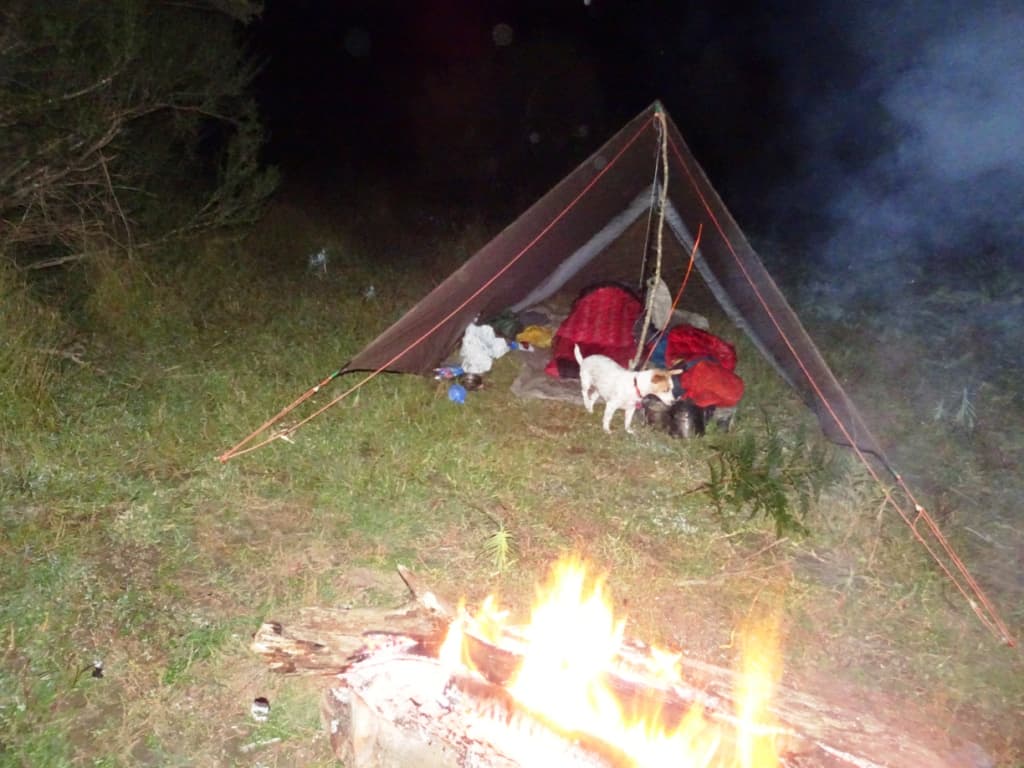
Della and I had one of our ‘hangout’ type of shelters where we could sit in the open end under the shelter and enjoy a fire out the front. I had no trouble getting a fire going, but Steve could not manage it at all at his tent, try as he might. You do need dry fire-starting materials, you see. Of course they could share our fire anyway until bed-time, so it did not matter. It would matter a lot more if you alone and were really relying on starting a fire to dry and warm yourself though to avoid hypothermia!
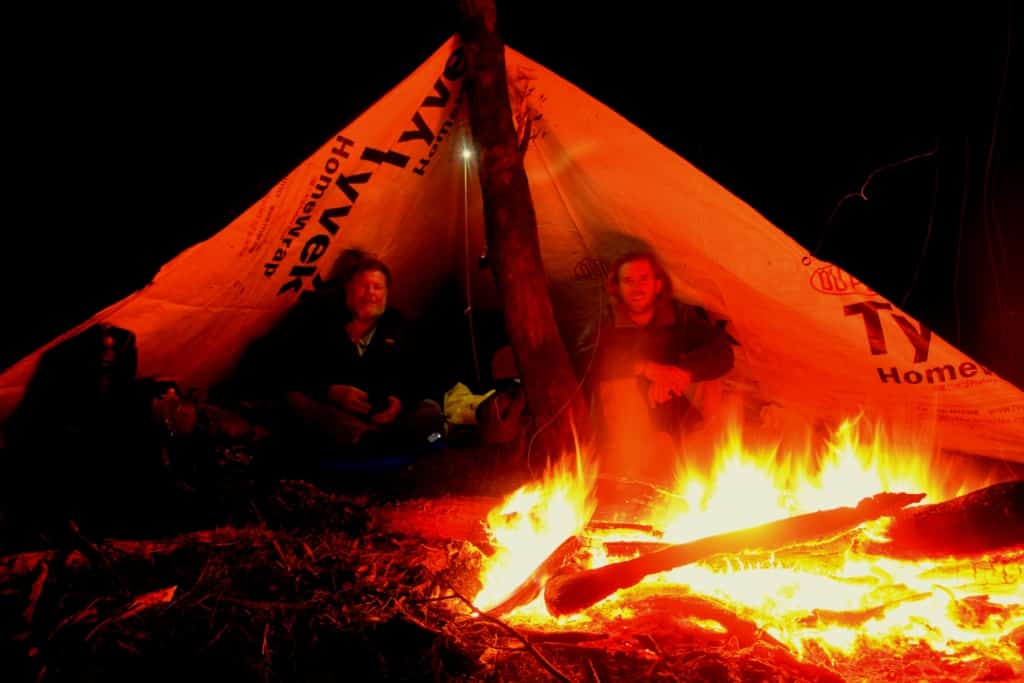
For ‘tinder’ dry grass/leaves/tree fern/ fibrous bark (such as stringy/peppermint) is essential. Sometimes even in heavy rain you can find scraps of such material inside hollow logs/trees, or underneath them, even down wombat holes etc – anywhere the rain has not reached, or the wind has blown them. There might really only be a pinch or leaf here and there which you might need to gather up and place (perhaps in a light cloth bag) inside your clothes to keep dry or to dry out – as your body heat will do this over time even if the material is damp to start with).
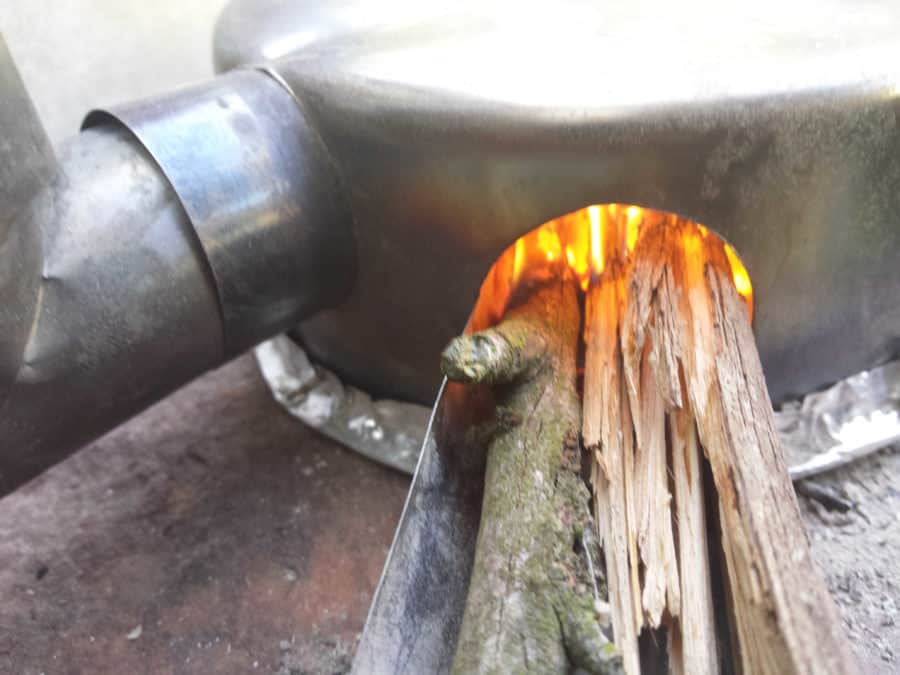
I have mentioned this bark before. On the lea side (particularly on the drier north side – in Victoria) even under the wet surface layer the bark will often be dry enough that it can be fluffed up and provide a readily combustible ‘tinder’. I have used it countless times to light a cheery fire at the end of a wet day’s deer hunting in the Gippsland mountains. It (and its like elsewhere) has saved many lives. You should familiarise yourself with such materials available in your local area.
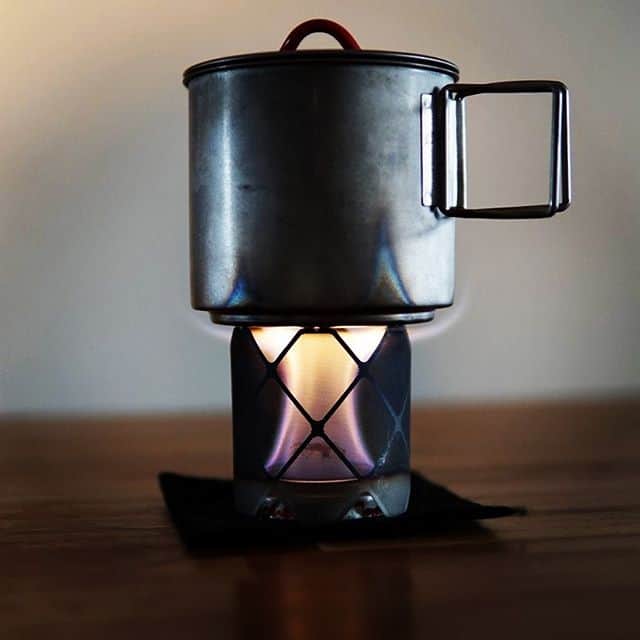
You also need a small (but larger) quantity of ‘kindling’ – stuff that is matchstick to straw thickness but quite dry. Again it is desirable to collect it during the day (if it is raining) or carry it with you. Wood that is lying on the forest floor is usually too sodden to light. You will need to look for twigs that are hanging in the air particularly under some shelter or other. If you cannot find any such you will need to split (to get at the dry inner wood) and shave larger timber. Such wood shavings are actually called ‘excelsior’ – what a lovely word!
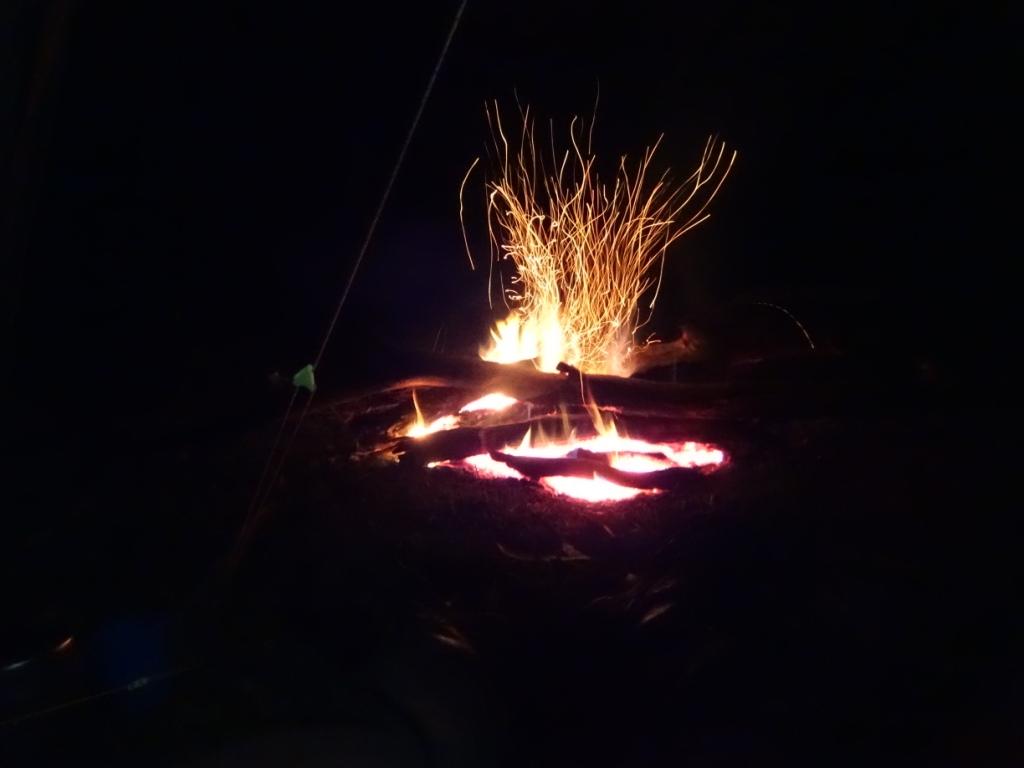
The next category of wood you need is ‘starting wood. This will range from the thickness of a straw though that of a pencil to that of a finger. You want a range in graduated order. The secret of lighting a fire is to have the smallest stuff at the bottom, gradually increasing in diameter towards the top.
More than anything I want to stress that the wood needs to be as dry as possible. Usually the densest, hardest wood is the driest. Rotten wood or saturated wood will either not burn or or do so very badly. Dead wood that is still attached to the tree will almost always be drier than wood that has fallen to he ground (unless it has fallen very recently). Almost no green (ie live) wood will burn.
If necessary you may need to split wood to get to the driest (heart) wood. If there is no other dry wood, you will have to do this or you won’t be having a fire – hence my post Carry a Knife. At the very least a fixed blade knife (or a Hatchet is necessary to split wood – though a hatchet is more important for getting water actually). A Machete can also be a useful tool. Obviously you don’t need to carry all three. It is possible to split wood with other (sharp) sticks and with stones too. Clearly nomadic people did, but they also had the skill!
The problem with folding knives is that when you need to hammer them through a piece of wood to split it they will often break at the hinge. This may mean no fire, and perhaps death. A fixed blade knife can be as light as an ounce. Not much to carry, but it may be what your life is worth!
You also need the next lot of wood, that from say the thickness of your thumb to that of your wrist, then on to that of your ankle, arm, leg etc – again in graduated order. You should have all this material laid by (sheltered as well as possible – perhaps under your tent) or leaning against and under the lea of a tree etc – anyway not lying on the wet ground.
However you do it you want to keep all this wood dry. A fire once it is going will dry wet wood out as it burns, but you have to be careful in the rain not to allow the fire to die down as the rain can put it out. Sometimes you even need to build a lean-to shelter for the fire or light it under a log etc if the rain is really heavy. Or you can carry a fire umbrella.
Of course (this should go without saying) you need to light your fire in a dry spot and out of the wind (and rain) as much as possible. If the ground is wet, you might need to ’tile’ it with some dry bark or even some small timber (say about 1″ in diameter) to get the baby fire off the wet ground – even moreso in snow. It is always best to light every fire (and have every camp) in a new spot to allow nature to ‘heal’ whatever you have wrought.
In no circumstance should you surround your fire with a ring of stones. This only makes an unsightly (and dangerous) obstacle for future users. It aids not a jot in fire prevention – indeed the reverse is the case. You can have smouldering embers which are hard to put out amongst the stones.
Also some stones explode and can easily put your eye out. If you don’t know which ones are likely to you should definitely stay well away from them. The only use of stones is for a three stone fore for pot support -if you have no other, but you are very much better off with an Egg-Ring Stove or with a Roll-Up Hobo Stove.
I remember lighting a fire along the Western Tyers one soaking winter’s night many years ago. Being under the South face of Mt Baw Baw it is always a very wet cold place to light a fire. This day it had been raining long and hard (probably for days) and I must perforce camp in a very damp shaded spot as I was waiting on my hound, Harpoon who was bailing a large stag far up the river. I had waded chest deep in icy-cold water after him for hours and kilometers along the river in the gloaming – and eventually in the pitch dark, but had finally to give up and make a camp.
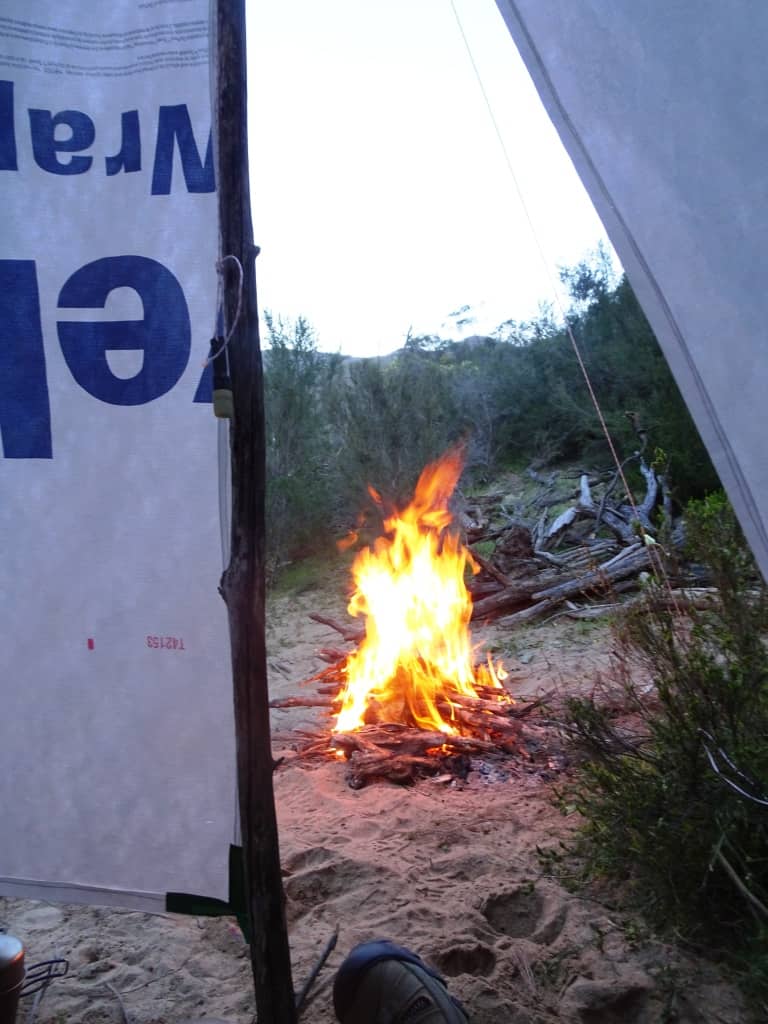
I was soaked through. I guess a had to gather (the equivalent of) a large trailer-load of wood and stuff (much of it of very indifferent quality for fire lighting purposes) before I struck a light. Even after I had a flame going the wood was so wet that it was over an hour before the fire put out more heat than it was sucking in, and even longer before I stopped shivering and teeth-chattering and felt that I was getting any benefit from it. Eventually it was able to warm and dry me through enough so that I was able to turn in to my ‘bed’ in some sort of ‘comfort’. It was below zero and there was snow lying all around, by the way. Just the sort of circumstances that people die in! It really is important that you be able to light a fire in the wet.

Another day along the Thomson River thirty years ago there was a hard (ie below zero) frost in the morning when we arrived which never thawed during the day. It was very cold in the eighties. It was a drizzly day. The bush was sodden cold and bitter. Sometime during the day I had shot a doe downriver and carried it back to my car (near a crossing) by myself. A guy who was along for the day staggered back to my car around dusk wearing cotton clothes, soaked through, barely able to talk – clearly in the early stages of hypothermia. He not only was wearing cotton he also did not have a dry change.
I loaned him my dry change of boots and wool clothes, got a fire going and stood around the fire as it thawed the frozen ground into an icy puddle, waiting for the last dogs to straggle in. I fed him and gave him something warm to drink. When he was recovered enough he went home and I never saw him, my clothes or any thanks from that day to this! I continued to wait by the dubious warmth of the fire for a few more hours until all the dogs were back in the truck before I went home. I think it took about two days for my feet to thaw out! You wonder why I have that saying, ‘No company is better than bad company’?
I was in the Kintail Hut along the Seaforth River in Fiordland one night years ago. It is always wet there. A particularly sodden place for a camp. I am usually there in the autumn, April-May so it is rarely below zero of a night. If I am staying in a hut (I prefer not to actually) I never light a fire, thinking that it is better to leave whatever small amount of combustible wood that might be found in the vicinity of the hut for folks who might be there when there really is a need, winter for example. European (and other tourists) are never like that and must have a fire even on a summer’s night. You probably know what such folks are like. I refer to my previous comment, ‘No company etc’.
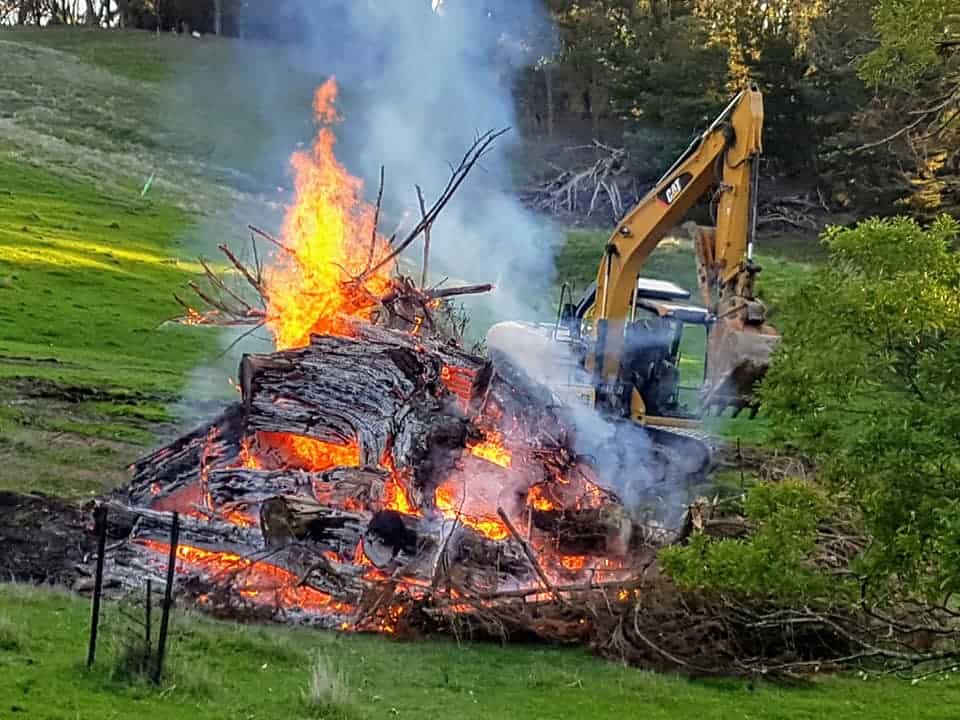
A couple of such folk were in the hut with me. They spent over four hours unsuccessfully trying to light a fire (even though suitable materials were available) as I thought anyone could see (but clearly not them) trying to light it from the top, putting smaller pieces on larger, having too much space between pieces & etc, etc. Every wrong method you could imagine. I just watched in wonder and consternation at the extent of human folly before they eventually gave up, having ruined most of the fire-lighting materials. They just had no idea of ‘forethought’ or order.
Start small and work up. Fire loves to work its way uphill. You must always light a fire at the bottom, but on a dry bottom. There also has to be enough space (not too much, not too little) for the fire to ‘curl’ around each piece of material as it grows and builds. You really have to practice this again and again until you are really good at it. There should be just enough space for the flame.
If you just watch someone do it you will most likely miss what they are doing because of the apparent ease with which they do it, if they are proficient. You will never develop skill by watching, only by trial and failure – and finally success!
Forget about those ‘tipi’ or cross-hatched fire-laying diagrams & etc you have probably seen in ‘survival’ books. Fascinating misnomer. Fire really loves to curl around timber which is basically laid in straight-ish lies. You make a little ‘nest’ of small starting wood under which you place your kindling in a smaller ‘nest’ with a hole in the bottom middle – where you light it, always on the windward side.
Fire loves oxygen. Be prepared to lie on the ground and blow upwards into the growing fire to make it flare, gently at first then more forcefully. Remember to have the wood ready at hand.
Don’t start a fire if you have to leave it to get fuel. That is a certain method of having it go out while you are away. You need to attend the fire – at all times. Never leave a fire! That is a recipe for its going out or getting away.
Once you have the tinder & kindling alight you may need to push/hold the starting wood up against it, taking care not to smother it. In the rain you may need to use your body to shelter the baby fire. You want a bright, clear, growing flame developing, to which you carefully add more (and gradually larger) material as the fire builds. Take your time.
You should only expect to get one ‘go’ at this, and it might be the last thing you do – if you don’t succeed. You don’t want to end up like the protagonist in this Jack London Story. Here is a good tip for how not to burn yourself while you are lighting a fire, and here is another. You should also read this: The Compleat Survival Guide
See Also:
How to Light a Fire in the Wet
DIY 20 Gram Roll Up Hobo Stove
